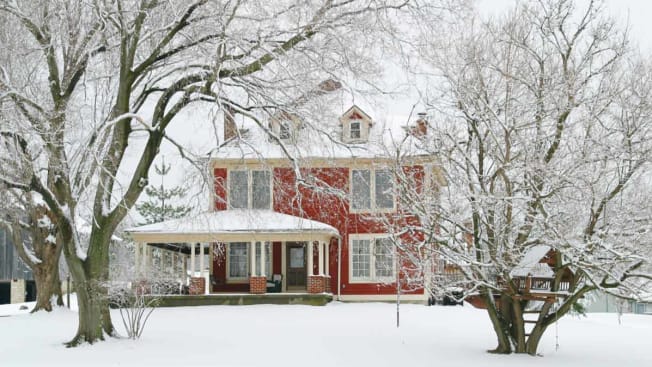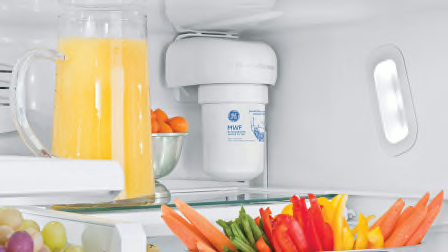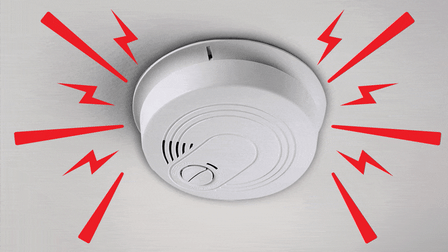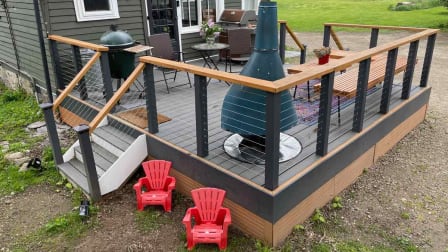10 Tips to Get Your House Ready for Winter
Save money and live comfortably even as temperatures plunge

Single-digit temperatures and freezing water can wreak havoc on your house and yard. The first thing to know is that water damage—particularly damage linked to frozen and burst pipes—accounts for the lion’s share of homeowners insurance claims.
1. Protect Indoor Pipes
According to Home Advisor, a burst pipe can cost $500 to repair and can cause as much as $3,000 in additional damage. Pipe insulation, which you can install yourself around any exposed copper or PVC water pipe, costs as little as 50 cents per linear foot. Use it under sinks, in attics and crawl spaces, and on pipes along exterior walls. Pay special attention to basements, where 37 percent of all burst pipes occur.
2. Insulate Your Attic or Crawl Space
Spending money to insulate your attic—exactly how much insulation you need varies by temperatures in your region—will save you money in the long run in two ways. You’ll keep your home’s heat out of the attic and in living quarters, where it belongs, and by keeping the attic cooler, you may prevent damaging ice dams from forming on your roof. Energy Star offers this guide to insulation, with recommendations for different regions of the country.
3. Service Your Furnace and Chimney
Fireplaces, chimneys, and heating equipment are some of the biggest causes of home fires, according to the Consumer Product Safety Commission. Have them serviced and inspected annually. Make sure the inspector examines the condition of the chimney—brick periodically needs upkeep to prevent water from leaking in—as well as the cap, which keeps heat-seeking animals out.
4. Swap In Storm Windows
Remove and store all window screens. Install glass storm windows, creating an insulating layer of air between your windows and the cold outside air. These also provide an added layer of protection against driving rain and snow during a heavy storm, even if you have newer, double-paned windows.
5. Repair Loose Roofing Shingles
If you suspect your roof has loose, damaged, or missing shingles, have a licensed roofing contractor do an inspection and make repairs before the first snow. A single cubic foot of snow weighs roughly 20 pounds. That pressure can cause loose shingles to shift further, allowing water or moisture to permeate your roof and leak into your home.
6. Clean and Inspect Gutters
Clogged gutters can cause water to back up and then freeze once temperatures drop. Keep gutters clear and properly connected to ensure that melting snow runs off your roof and through downspouts.
7. Repair Patios and Pavers
A loose patio stone or paving stone will only get worse over the winter as the natural freeze and thaw cycle of the soil hoists it farther out of place in a process called frost heave. Have loose stones reset by a mason or handyperson in the fall.
8. Look for Ailing Tree Limbs
A dead branch covered in snow can easily snap, endangering people below and potentially causing thousands of dollars worth of damage if it strikes a roof, a porch, or siding. Before the first snow, have a reputable tree service, landscape contractor, or arborist remove any dead or ailing limbs.
9. Secure Outdoor Water Sources
Drain and store any garden hoses or sprinklers before the first frost to eliminate the chance that they’ll freeze and burst. For hose bibs, shut off the water-supply valve inside your house or basement that feeds the line, then open the outdoor spigot (any water trapped inside will drain out). If you simply shut off the spigot itself, trapped water can freeze and cause a burst pipe inside.
10. Mark Garden Beds, Paths, and Driveways
After a heavy snowfall, it can be tough to see where driveways, flower beds, or walkways end and your lawn begins. Use fiberglass snow poles or driveway markers every several feet to line the edges of these areas. That helps provide a clear path whether you’re blowing or shoveling snow yourself or you hire a professional plow driver.
Frozen Pipes 101
If the temperature outside drops below freezing, your pipes might be at risk of bursting. Consumer Reports explains what to do if it happens to you.




















